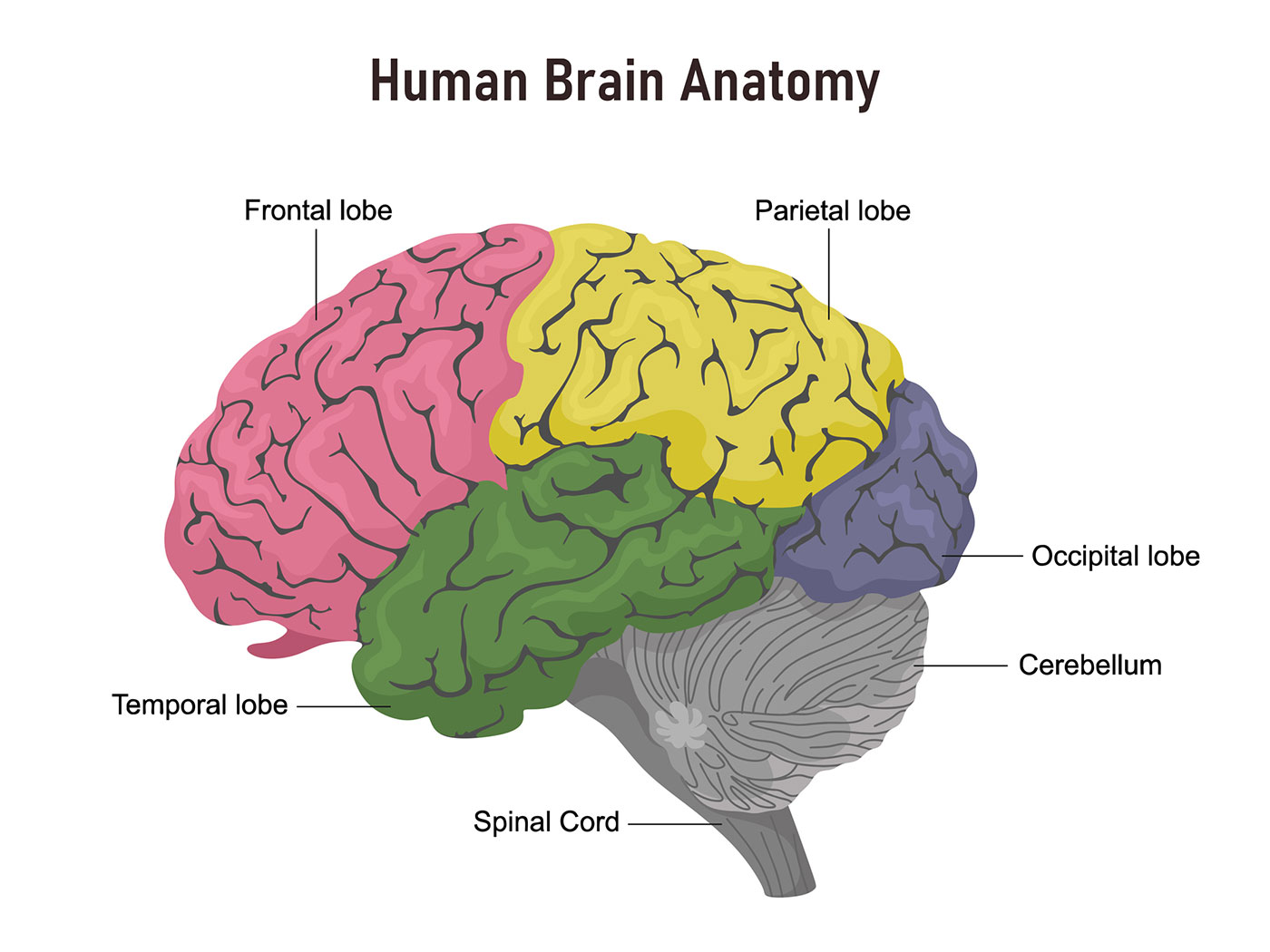
Pencil Brain Graphite Drawing & Illustration hamaguri.co.jp
The brain is made up of billions of neurons and it also has a number of specialized parts that are each involved in important functions. While there is still a great deal that researchers do not yet know about the brain, they have learned a great deal about the anatomy and function of the brain.

The Brain
Deep in the core area of the brain, just above the top of the brainstem, are structures that have a great deal to do with perception, movement, and the body's vital functions. The thalamus consists of two oval masses, each embedded in a cerebral hemisphere, that are joined by a bridge. The masses contain nerve cell bodies that sort information.

Human Brain 3D Model by davidzafra1
The making of the human brain from the tip of a 3 millimeter neural tube is a marvel of biological engineering. To arrive at the more than 100 billion neurons that are the normal complement of a newborn baby, the brain must grow at the rate of about 250,000 nerve cells per minute, on average, throughout the course of pregnancy.
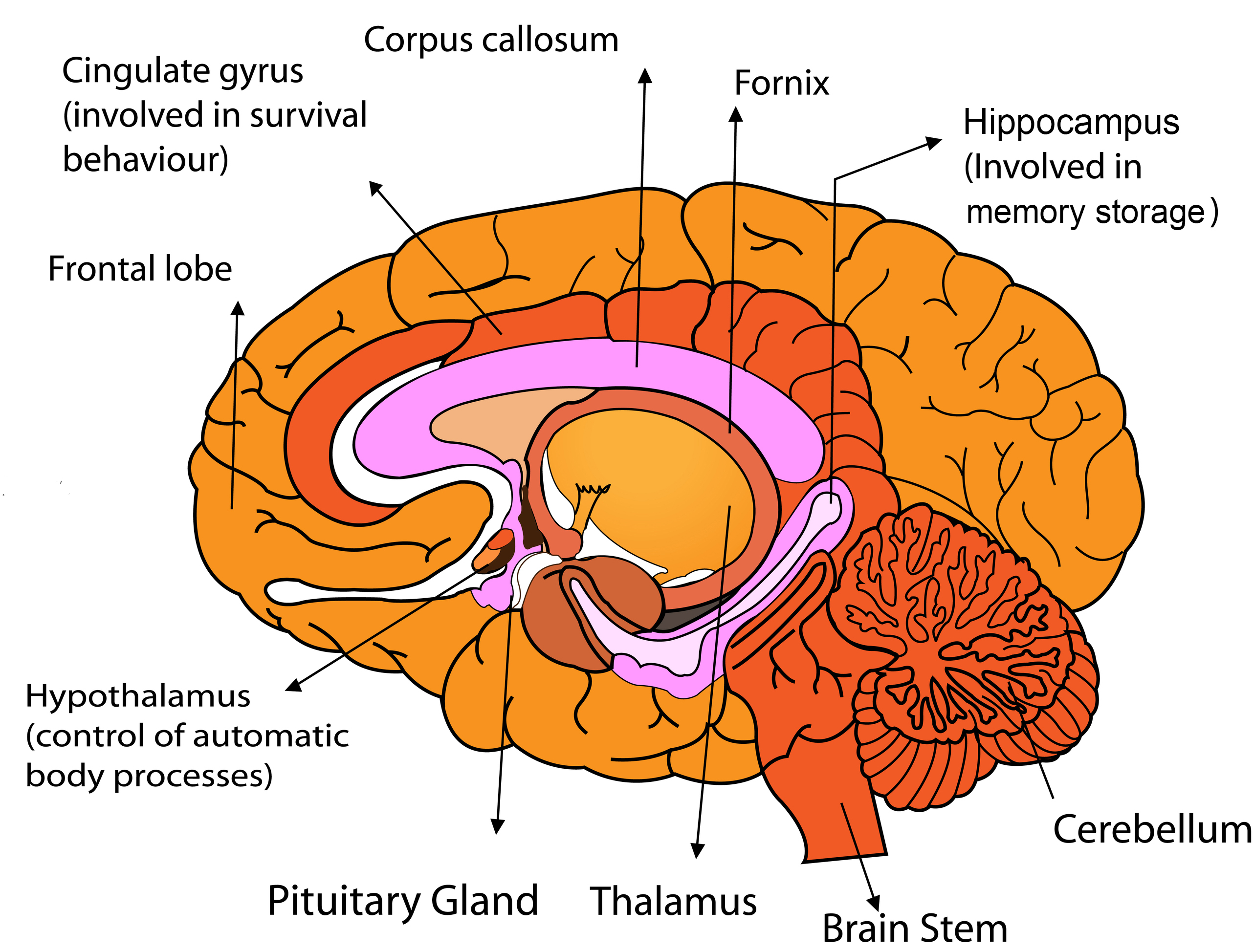
Parts of the Human Brain
While there are a few different ways to divide the brain, the developmental division roughly organizes the brain into three general regions: forebrain (also known as the prosencephalon), midbrain (mesencephalon), and hindbrain (rhombencephalon). The forebrain is home to sensory processing, endocrine structures, and higher reasoning.
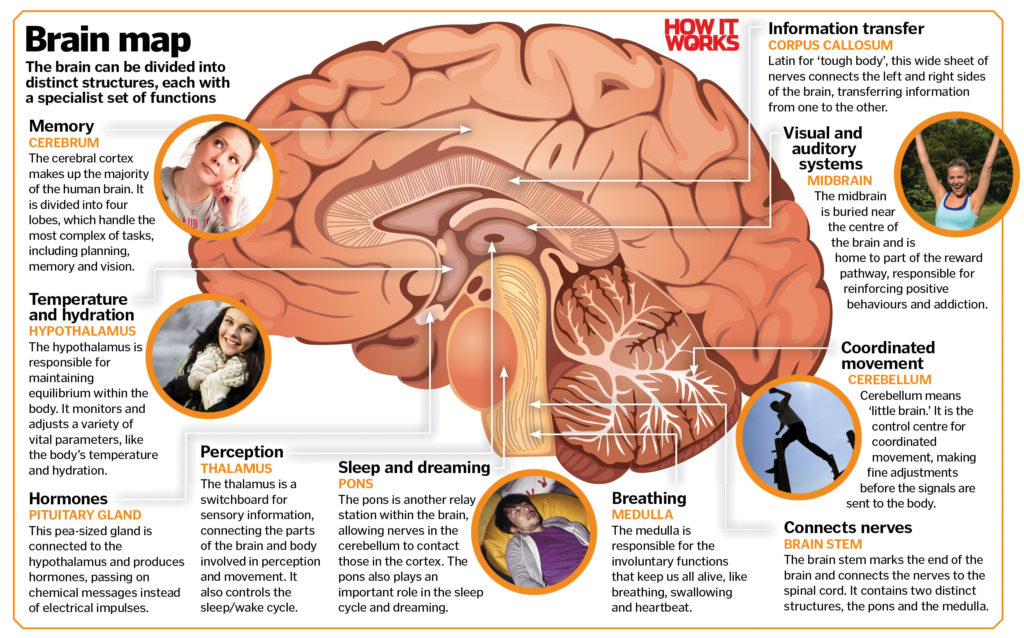
How does your brain develop as you grow older? How It Works
The human brain is perhaps the most complex of all biological systems, with the mature brain composed of more than 100 billion information-processing cells called neurons.[1] The brain is an organ composed of nervous tissue that commands task-evoked responses, movement, senses, emotions, language, communication, thinking, and memory. The three main parts of the human brain are the cerebrum.
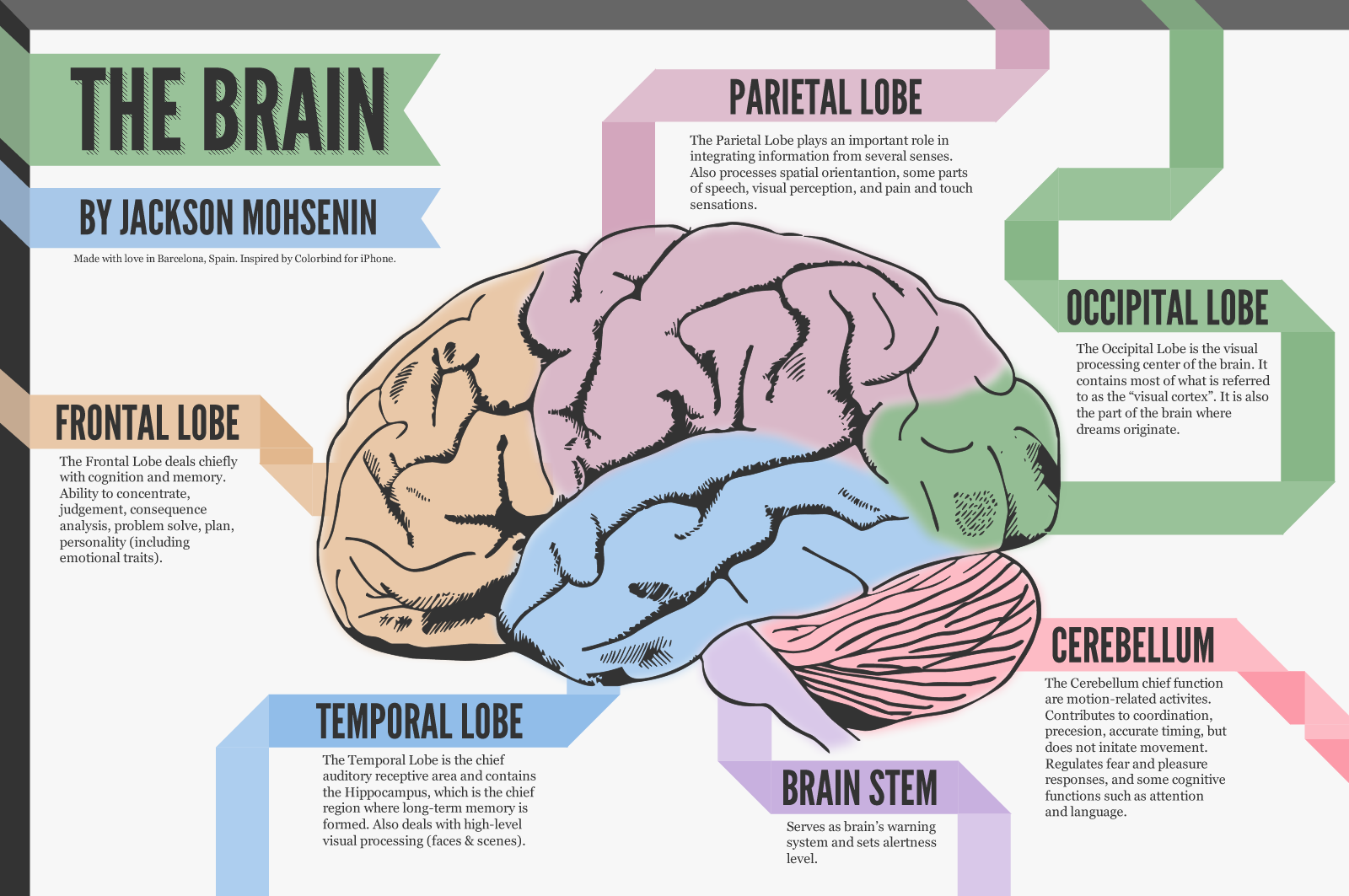
Ms. Raino's Science Classroom! The Structure and Function of the Brain
The brainstem is the structure that connects the cerebrum of the brain to the spinal cord and cerebellum. It is composed of three sections in descending order: the midbrain, pons, and medulla oblongata. It is responsible for many vital functions of life, such as breathing, consciousness, blood pressure, heart rate, and sleep. The brainstem contains many critical collections of white and grey.

Images Of The Brain The Brain Chart Brain Diagram Brain Function
The cerebral cortex is a thin layer made up of grey matter, where neurons are densely concentrated, covering the brain and controlling high-level cognitive functions. The cerebral cortex makes up about 80% of the brain's volume and is responsible for many complex phenomena, including perception, thought, language, attention and memory.

Cách để Vẽ bộ não wikiHow
In How Brains Make Up Their Minds, the distinguished US neuroscientist Walter J. Freeman charts the brain's mind, progressing from single nerve cells, through cooperative assemblies of these cells, to the emergence of complex patterns of brain activity.. By drawing on new developments in brain imaging and theories of chaos and nonlinear.
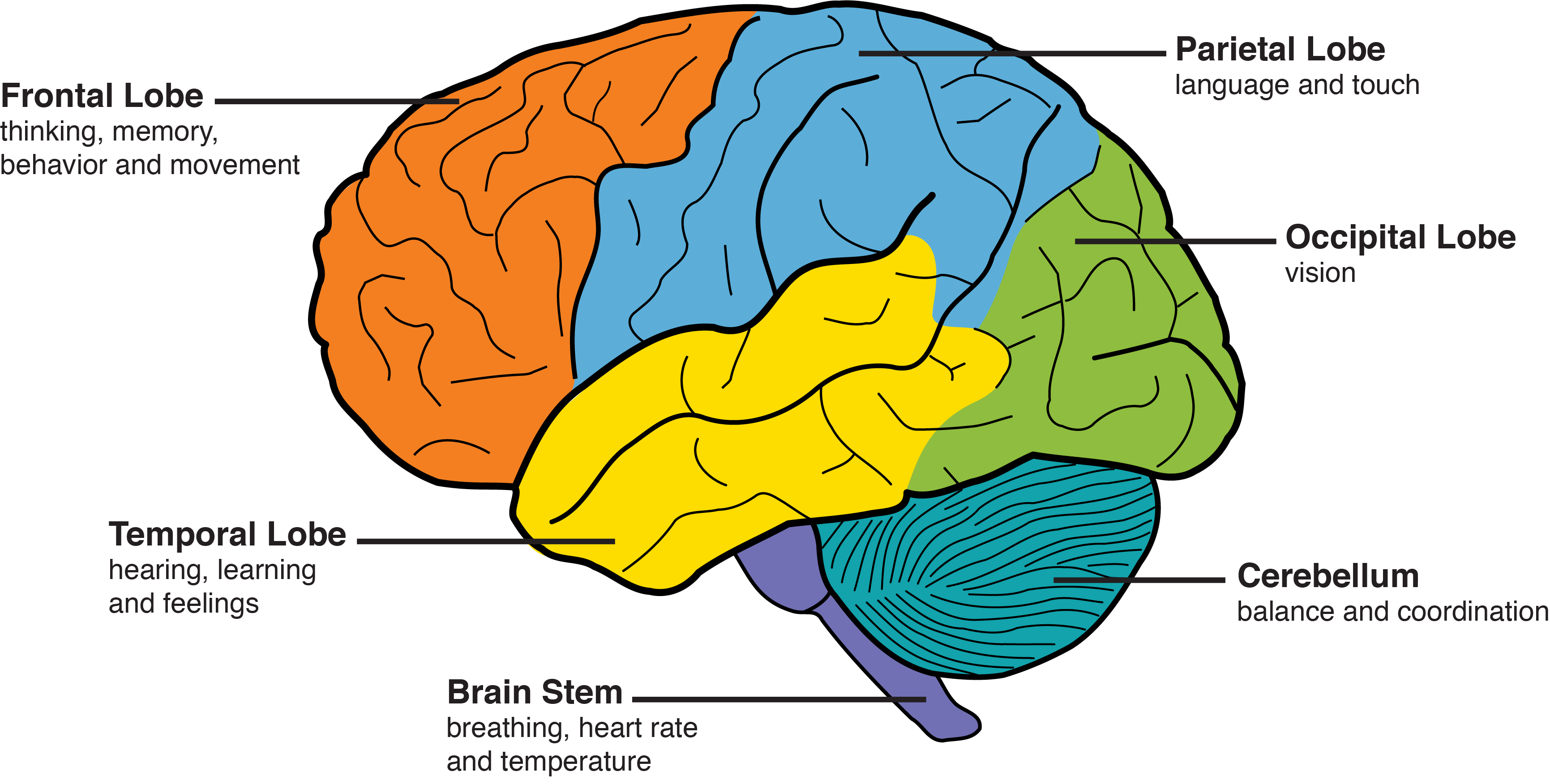
Behavior & Personality Changes Memory and Aging Center
Anatomy of the human brain Brain size and intelligence Left brain vs. right brain BRAIN Initiative The brain after death Additional resources The human brain is the command center for.

Alcohol and Your Brain Ask, Listen, Learn
Brain The brain (or encephalon) is an organ that serves as the center of the nervous system in all vertebrate and most invertebrate animals. In vertebrates, a small part of the brain called the hypothalamus is the neural control center for all endocrine systems. [1]

Unit 3 All About the Brain AP Psychology
Anatomy The midbrain is the most superior region of the brainstem. Structure Your brainstem connects your brain to your cervical spinal cord (neck) and consists of three main parts: Midbrain Pons Medulla oblongata (Sometimes, the diencephalon is also considered part of the brainstem.)
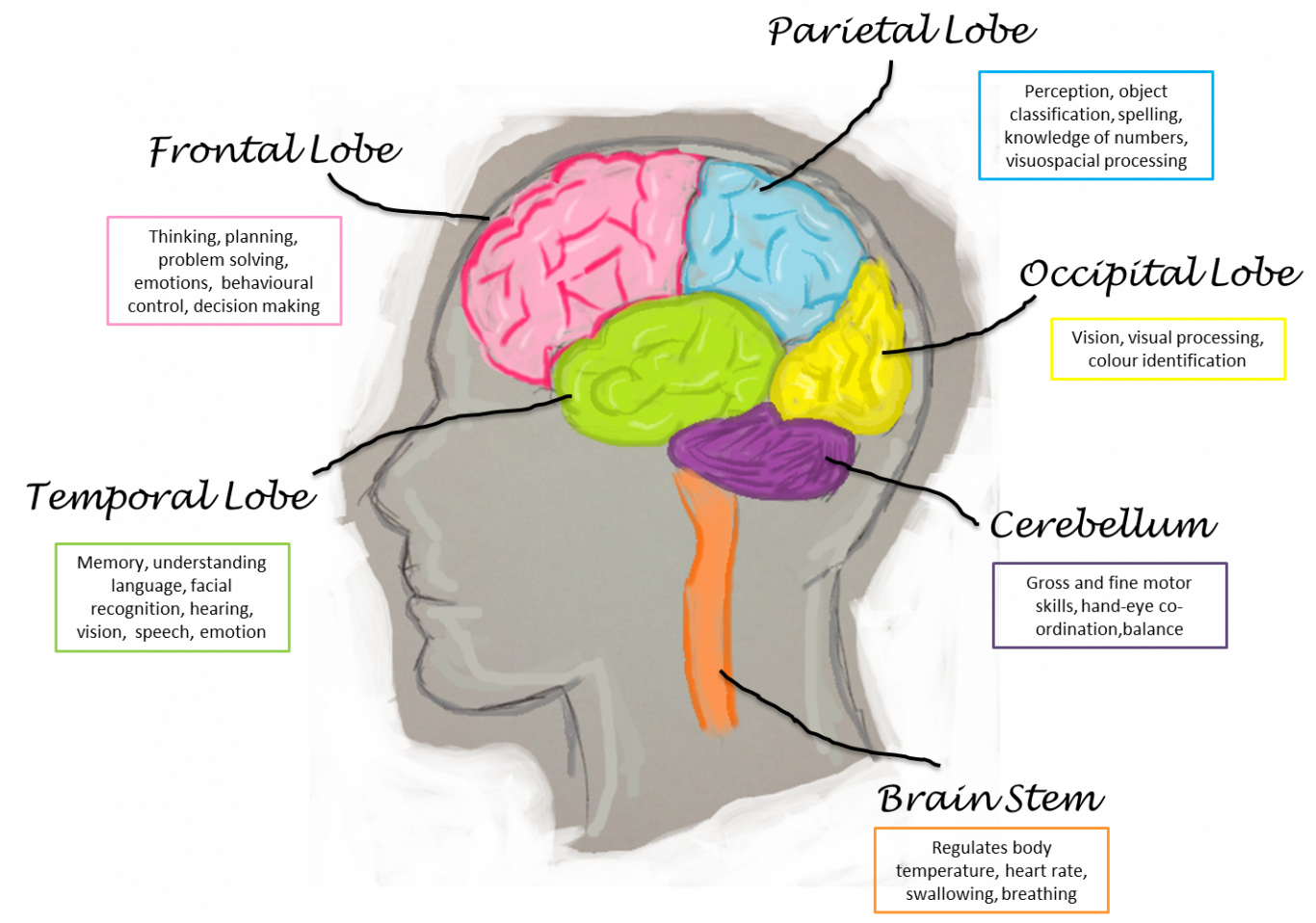
Bedside Brain Imaging A New Era in Detecting Brain Injuries
The cerebral hemispheres make up the uppermost portion of the brain and are involved in sensory integration, control of voluntary movement, and higher intellectual functions, such as speech and abstract thought. The thalamus is the main relay centre between the medulla oblongata and the cerebrum;.

The Medulla ThinkFirst
The brain is a complex organ that controls thought, memory, emotion, touch, motor skills, vision, breathing, temperature, hunger and every process that regulates our body. Together, the brain and spinal cord that extends from it make up the central nervous system, or CNS. What is the brain made of?

Human Brain Anatomy and Function Cerebrum, Brainstem
The anatomy of the brain is complex due its intricate structure and function. This amazing organ acts as a control center by receiving, interpreting, and directing sensory information throughout the body. The brain and spinal cord are the two main structures of the central nervous system. There are three major divisions of the brain.
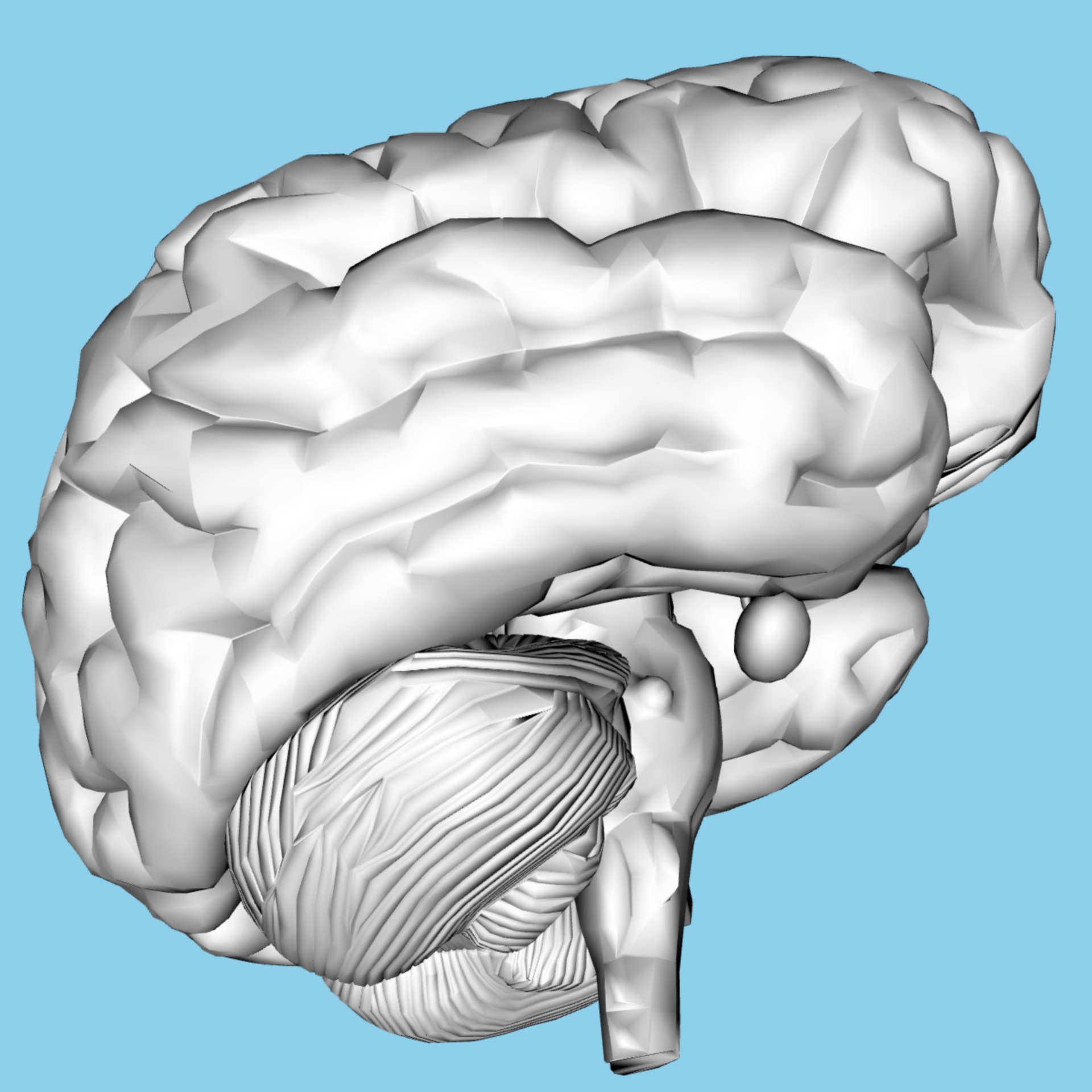
Human Brain Free Stock Photo Public Domain Pictures
The brain is composed of more than 180 billion cells, each of which receives up to 15,000 connections from other cells in the nervous system. How this structure and neural activity gives rise to human thought is one of the fundamental questions researchers at the CCBN are working to answer.

Lob some Lobes in the Ultimate Brain Battle!
Brain Your brain is an essential organ that controls many body functions. Your brain receives and interprets all the sensory information you encounter, like sights, sounds, smells and tastes. Your brain has many complex parts that work together to help you function.